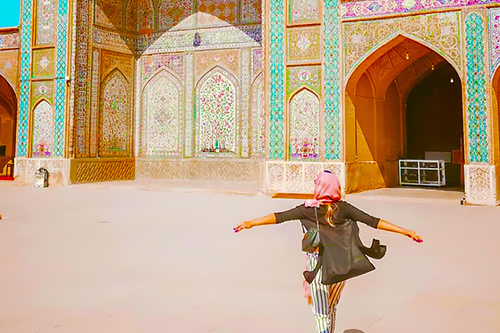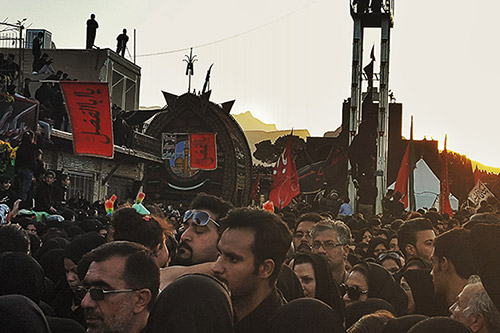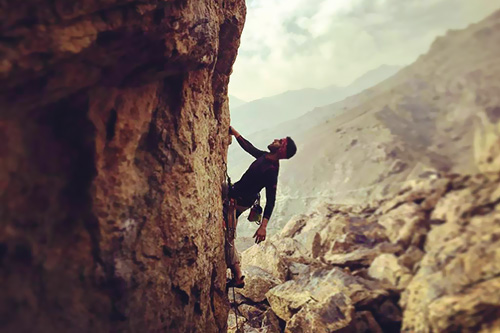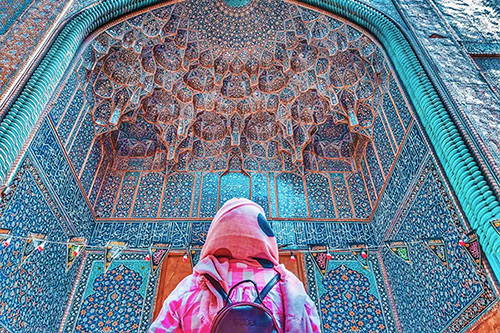 Signin with Google
Signin with Google Signin with Facebook
Signin with Facebook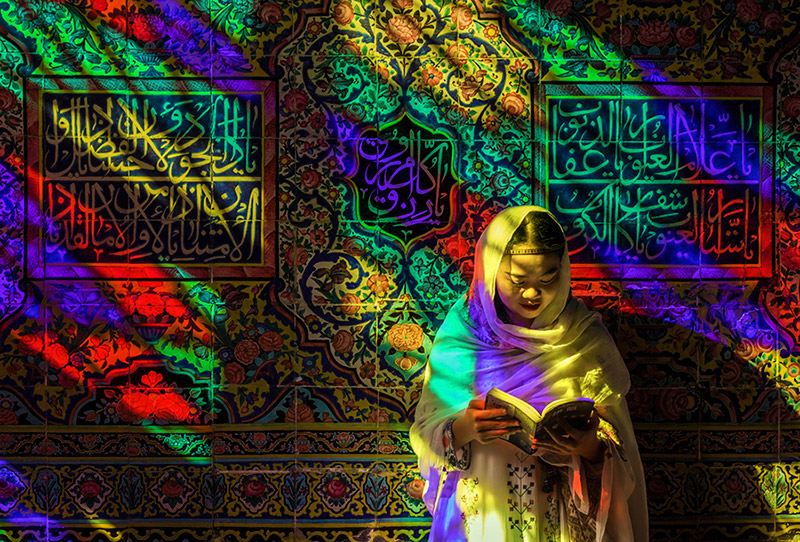 About Iran
About IranUNESCO Listed Intangible Cultural Heritages of Iran
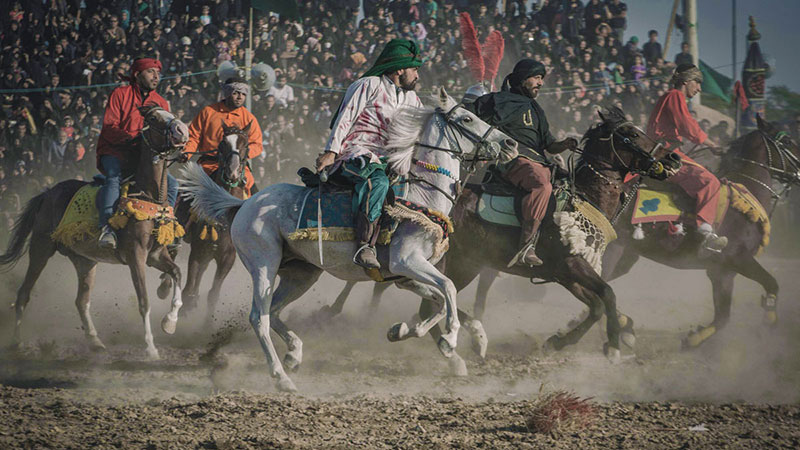
UNESCO defines intangible cultural heritage as those oral traditions and expressions, social practices, knowledge and practices concerning nature and traditional craftsmanship inherited from our ancestors and passed on to our descendants. Intangible heritage is not confined to museums and monuments. Also referred to as living cultural heritage, it includes all those practices from the past, as well as contemporary rural and urban practices in groups and communities.
Intangible cultural heritage creates cohesion and a sense of belonging in a society. Intangible heritage has to be recognised by groups and communities that create them, maintain them and pass them on from generation to generation. Safeguarding the intangible heritage of communities helps keep their cultures alive.
UNESCO has officially recognised and inscribed 14 elements of Iranian intangible cultural heritage. In the following find the list of Iran Intangible Cultural Heritages on the Representative List of the Intangible Cultural Heritage of Humanity until 2020.
1- Radif of Iranian music
Radif is the essence of the classical music of Iran. Musicians use Radif as a set of musical tools for their performances and compositions. They can be vocal or instrumental and performed on a variety of instruments with different techniques. The Radif satisfies both the aesthetic practice and the philosophy of Persian musical culture. It is a form of art that requires self-devotion and a decade of practice to master this art.

2- Traditional skills of carpet weaving in Kashan
The enchanted small city of Kashan has an old reputation for artisan Persian carpet weaving, from silk or cotton threads. The carpet weaving process starts with a design. The colours of Kashan carpets come from a variety of natural dyes, such as vine leaves and pomegranate skin. Almost two-thirds of the carpet weavers are women. They pass on their traditional skills of carpet weaving to their daughters through apprenticeship.

3- Traditional skills of carpet weaving in Fars
Persian carpets of Iran have a long history of the repertoire in the world. The traditional skills of carpet weaving in the South-West of Iran, the province of Fars, have remained untouched for centuries. The men of the family shear the wool during spring or autumn. They construct the carpet loom horizontally on the floor. The women then convert the wool into yarn on snipping wheels. The use of natural dyes and personal touches reflect their nomadic lifestyle. The skills and traditional craftsmanship are passed on from mothers to daughters and fathers to sons. No two carpets look the same.
4- Music of the Bakhshis of Khorasan
The Bakhshis are a group of people in Khorasan province with the significant musical skill of playing the dotar, a two-stringed long-necked lute. Their music, known as Maghami, consists of instrumental and vocal pieces performed in different languages narrate Islamic and epic poems. The Bakhshis’ music transmits history, culture and religious fundamentals. The Bakhsis are considered as the guardians of the regional cultural heritage of the community.

5- Pahlevani and Zoorkhanei rituals
Pahlevani is a form of traditional ancient sport combined with music, dance movements and acrobatics in Iran. Zoor-Khaneh is the domed venue where Pahlevani ritual takes place at. To obtain a title and become qualified in this practice, one must become competent in both physical and spiritual aspects of well being. Each Zoor-Khaneh has a master named Morshed, who is not only an instructor but in charge of spreading good morals amongst athletes. Upon his instructions through the sound of his music, the athletes start the show. The lyrics of the songs and stories sung by Morshed stem from spirituality, religion and histories of national heroes.

6- Ritual dramatic art of Ta’zīye
Ta’zieh is a religious performance amongst Shia’ Muslims of Iran. This performance is unique to the holy month of Muharram, and it is considered an intangible cultural heritage of Iran by UNESCO. This performance is a re-enactment of the battle of Karbala. This battle occurred on October 10 680 AD, between the troops of Yazid and the grandson of the Islamic prophet Muhammad, called Hossein. Elements of conflict between good and evil, sacrifice and martyrdom are showcased in a Ta’zieh performance. The choice of colours in dressing the characters are symbolic and depict meanings to the audience. The sounds and music chosen could resemble a musical performance; however, some would regard it as a religious Opera.

7- Naqqāli, Iranian dramatic storytelling
Naqqāli is an ancient form of performing arts, where a skilled narrator is telling a story to an audience. It is an improvised form of dramatic performance and storytelling, recounting Persian literature and culture as well as traditional music. The narrator needs to captivate the audience through his skills and talent. This form of art used to be very popular in the old days. Naqqāli was formerly performed in caravanserais, tea houses and on the streets. Globalisation and urbanisation have caused a steep decline in interest in this form of art. Therefore, Naqqāli has been registered on UNESCO’s list of intangible cultural heritage in need of urgent safeguarding in 2011.

8- Traditional skills of building and sailing Lenj boats in the Persian Gulf
Lenj boats are hand-built wooden boat vessels, used by inhabitants of the Northern coast of the Persian Gulf for fishing, trading and pearl diving. The skills associated with Lenj making, fishing, weather forecasting, wind navigation and sailing, in general, comprise the traditional know-how of this ancient form of art. The navigational knowledge, philosophy, ritualistic background and sailing skills were traditionally passed on from father to son. Sadly, nowadays the community of sailors has shrunk and the traditional skills of building and sailing Lenj boats are to be safeguarded, if were to remain as part of the intangible cultural heritage of this region in Iran.

9- Nowruz
Nowruz essentially means ‘’new day’’. Nowruz is the ancient Persian New Year Feast which usually falls on the 20th or 21st of March. Nowruz is a UNESCO recognised hallmark event. It is inscribed in the list of intangible cultural heritages of Iran as Persians have been celebrating it for thousands of years. Nowruz is deeply rooted in the rituals and traditions of Persians. Ceremonies and cultural pre-celebratory events are leading up to Nowruz, as well as customs that have been practised during the 13 days celebratory period.

10- Traditional skills of crafting and playing Dotār
The dotar is a traditional crafted instrument with domination expanded through the east of Iran within a vast historic region once renowned as the Greater Khorasan. This crafted folkloric musical instrument is the tune of the history, ethnicity and culture of its bearers who mostly are farmers including male and female crafters and players.
The skill and knowledge of crafting and playing the dotar are passed through traditional master-pupil training. In the dotar regions, on important social and cultural events and ceremonies such as weddings, rites and local festivals performers play the dotar and recount epic and gnostic narrations related to their ethnic history.

11- Qālišuyān rituals of Mašhad-e-Ardehāl in Kāšān
The legend of Soltan Ali, a holy figure among the people of Kashan, Fin, Khaveh and Nashalj, brought about an important ritual called Qalishuyan that takes place every year on the nearest Friday to the seventeenth day of October 9 for hundreds of years.
The name of this ritual comes from two words of ghali meaning rug, and Shuyan which means the ones who wash the rug in Persian. According to this legend, Soltan Ali was martyred, his body carried in a carpet to be washed into a holy stream of the area and buried by the people of Fin and Khaveh. Today the qalishuyan is being performed with a sophisticated order of rites by a huge gathering of four villages and cities named above in the site of Soltan Ali’s mausoleum. This procedure has been maintained by oral transmission from each community to the other one.

12- Flatbread making and sharing culture: Lavash
There are plenty of beliefs and traditions related to flatbread within the confines of the countries such as Azerbaijan, Iran, Kazakhstan, Kyrgyzstan and Turkey. The main subject about the flatbread which is got various names in different cultures, can be seen through the preparation and baking it while involving family members and neighbours in rural regions or traditional bakeries participate together in the process using an earth or stone oven in the ground.
In Iran, the flatbread is called Lavash. From traditional bakeries in every neighbourhood to the most remote pristine areas that Iranian nomads live, the culture of making and sharing flatbread is a practice that shows hospitality, solidarity and shared cultural beliefs that pass on within communities.
13- Chogān, a horse-riding game accompanied by music and storytelling
More than 2000 years of history stands behind the game of the Persian king; Chogan. Chogan is considered as a cultural element that joins the athletic aspect of a royal practice. It is defined to be a traditional horse-riding competition that inserted musical and storytelling elements in it. Bearers of the Chogan include three primary groups: the players, the storytellers and the musicians with a powerful association to the history, literature, handicrafts and the identity of its practitioners.

14- Art of crafting and playing with Kamantcheh, a bowed string musical instrument
Kamancheh, as pronounced in Persian, is an Iranian bowed string instrument that dates back to one thousand years before that is an essential element of classical and folkloric music in Iran and other countries of the region.
The melody of Kamancha conveys different themes from mythological to mystic and comic to state the prominent part of this instrument in the musical culture of its birth region. The knowledge of performing Kamancheh and the art of crafting it is perceived and transmitted from generation to generation as a strong part of the intangible cultural heritage of its bearers.

In conclusion, the UN’s sustainable development goals support safeguarding the intangible cultural heritage of societies. After all, traditional skills and indigenous knowledge are designed to ensure that resources last a lifetime. It is how our ancestors did it. Now it is our corporate social responsibility to safeguard these intangible skills through learning, supporting and passing them onto next generations.
By Melika Shahid / TasteIran
